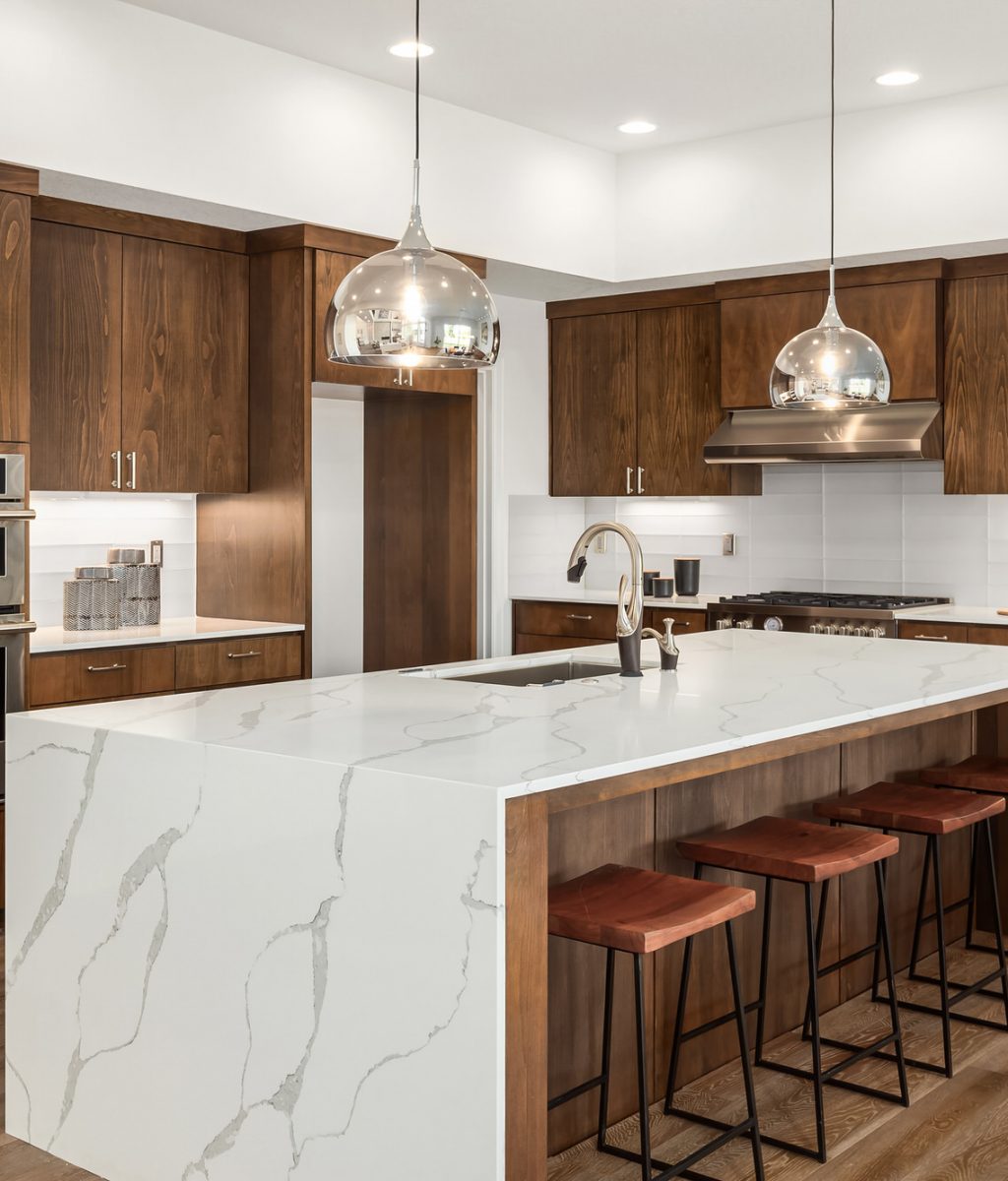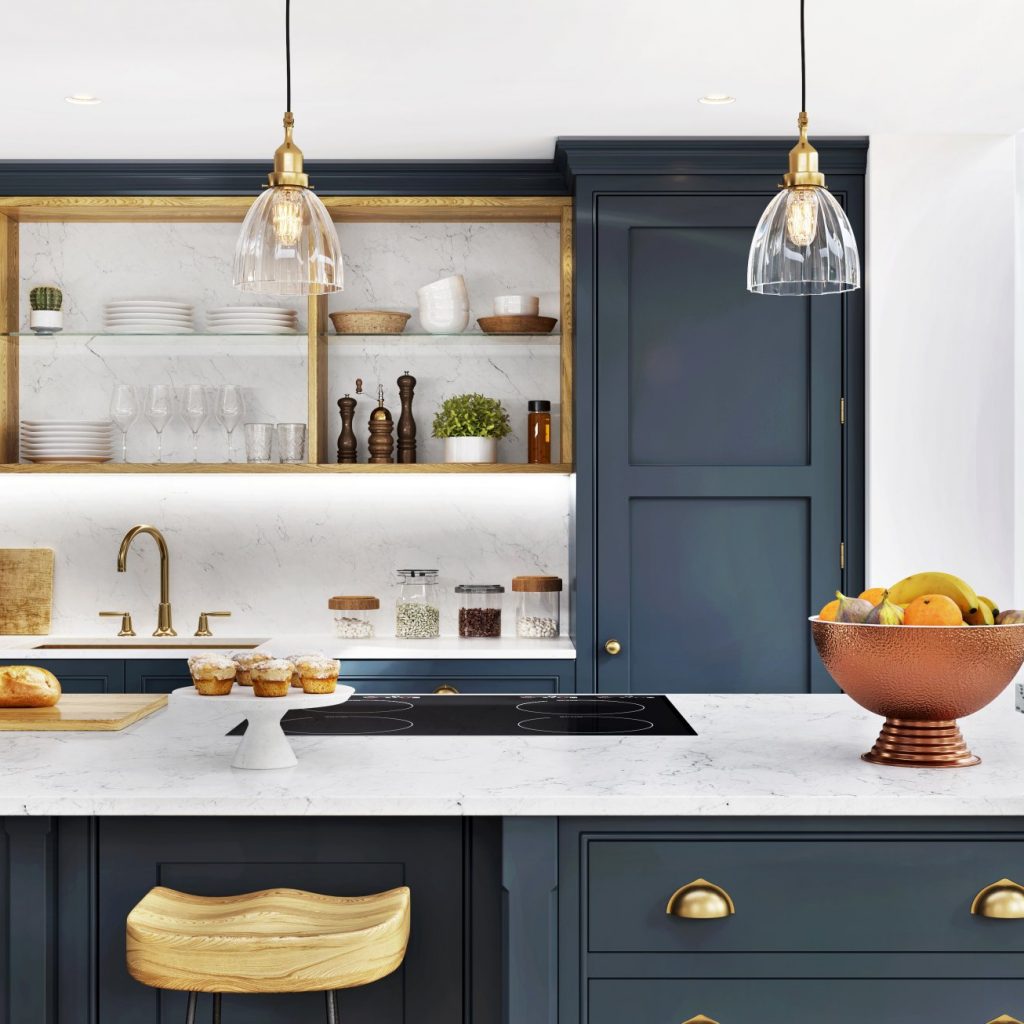To find quality stone for granite countertops, the majority of the world’s granite is quarried in Brazil, Italy, India, and China. Each region has its own unique characteristics in the stone’s appearance from colors that vary from exotic reds and blues to more earthy blacks, browns and greens.
Because granite is a natural product, the stone itself is created purely by Mother Nature–no two pieces of granite are identical. The combination of mineral crystals, such as quartz and feldspar, are what gives granite its unique characteristics. For example, mica is responsible for forming the black flecks and veins; quartz produces the lighter gray veins; and feldspar contributes he white components in granite.
Unlike some other countertop materials, granite will never fade or change color over time.
There are literally hundreds of variations of color and patterns for granite countertops and are typically grouped into these colors: beige, black, blue, brown, burgundy, gray, green, red, yellow, and white. Visit our showroom and you can see all these beautiful granite slabs for yourself!
You can choose from several finishes for your granite countertop including polished, honed, satin, antique, leather and thermal or flamed finish.
A polished finish, the most popular finish, offers a reflective, mirror-like glossy appearance. The polished finish also has the best rating when it comes to protecting your countertops from scratching and staining.
The honed finish provides a matte look, which has a soft, powdery look. Although the honed finish is a relatively popular choice, it is more susceptible to scratching and staining. The satin finish, while very similar to the honed finish, has a smooth, soft finish but has a more vibrant appearance.
If you’re looking for something a bit more unique, you may like the leathered finish which is similar to the satin finish with a texturized appearance that feels similar to aniline leather. The antique finish offers the small sense of texture similar to the leathered finish, but has a matte, brushed appearance.
The thermal finish (also known as a “flamed finish”) heats up the granite surface with extremely high temperatures causing the individual stones in the granite to burst and change color. The result is a rougher texture with a more natural, faded appearance. This granite finish is best for high-moisture areas including showers and exterior living spaces such as firepits, outdoor kitchens and uncovered areas.

